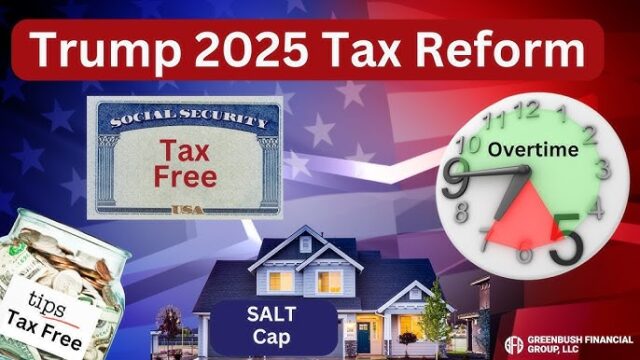
President Donald Trump recently outlined his tax priorities for 2025 during a meeting with House GOP leaders, unveiling a series of ambitious proposals aimed at reshaping the nation’s tax landscape. These initiatives reflect his broader economic agenda and have sparked debate among policymakers and the public alike.
Key Proposals
One of the cornerstone measures in Trump’s plan is the elimination of the carried interest loophole. This provision currently allows private equity managers to pay taxes at a lower capital gains rate rather than the higher ordinary income tax rate. Closing this loophole is intended to increase tax equity and generate additional revenue for the federal government.
In a move that could benefit taxpayers in high-tax states, Trump has proposed expanding the state and local tax (SALT) deduction. The SALT deduction, which was capped under the 2017 Tax Cuts and Jobs Act (TCJA), has been a point of contention for many taxpayers, particularly in states with high property and income taxes.
Additional measures include eliminating taxes on tips, Social Security benefits, and overtime pay. These changes are aimed at reducing the tax burden on lower-income workers and retirees. Trump also expressed a desire to renew the tax cuts implemented under the 2017 TCJA, signaling a continued focus on maintaining reduced tax rates for both individuals and businesses.
A notable aspect of Trump’s plan is the proposal to cut taxes for American-made products, which aligns with his “America First” economic strategy. Furthermore, he seeks to eliminate special tax breaks for billionaire sports team owners, a move aimed at curbing perceived tax favoritism.
Political and Economic Implications
The scope and cost of these tax proposals are significant. Treasury Secretary Scott Bessent emphasized the urgency of addressing affordability issues, acknowledging the potential financial strain on the federal budget. Republicans are preparing a sweeping tax bill that could cost trillions, raising questions about its fiscal sustainability.
On the legislative front, Senate Republicans have introduced a $300 billion measure focused on border security. House Speaker Mike Johnson has advocated for combining tax cuts with immigration reform into a single comprehensive bill. This strategy reflects a broader GOP effort to address multiple policy priorities simultaneously.
Challenges and Outlook
While Trump’s tax plan has garnered support among conservative lawmakers, it faces potential hurdles. The projected cost of the proposals and their impact on the federal deficit are likely to be key points of contention during legislative debates. Additionally, the plan’s emphasis on renewing the 2017 tax cuts may encounter opposition from Democrats who have criticized those cuts for disproportionately benefiting wealthy individuals and corporations.
As the 2025 legislative session approaches, the success of Trump’s tax agenda will depend on negotiations between the White House and Congress. The outcome of these discussions will have far-reaching implications for the U.S. economy and taxpayers alike.
In the coming months, all eyes will be on Capitol Hill as lawmakers grapple with the challenge of balancing tax reform, economic growth, and fiscal responsibility.



